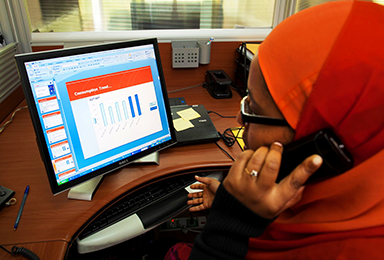Globally and nationally, the USAID Global Health Supply Chain Program-Procurement and Supply Management (GHSC-PSM) project uses and promotes advanced quantification methods to improve forecasts and provide suppliers and managers with more accurate information to plan their production and deliveries, which helps countries avoid stockouts and product waste through expiration. Consolidating supply chains from multiple countries also allows for bulk purchasing and drives down commodity costs.
